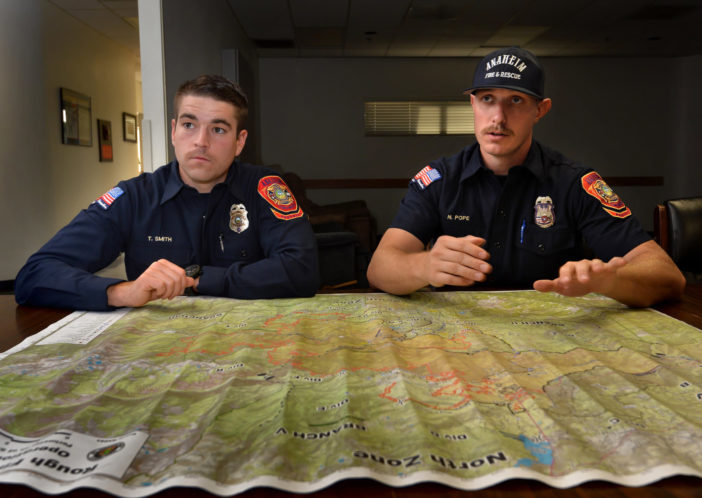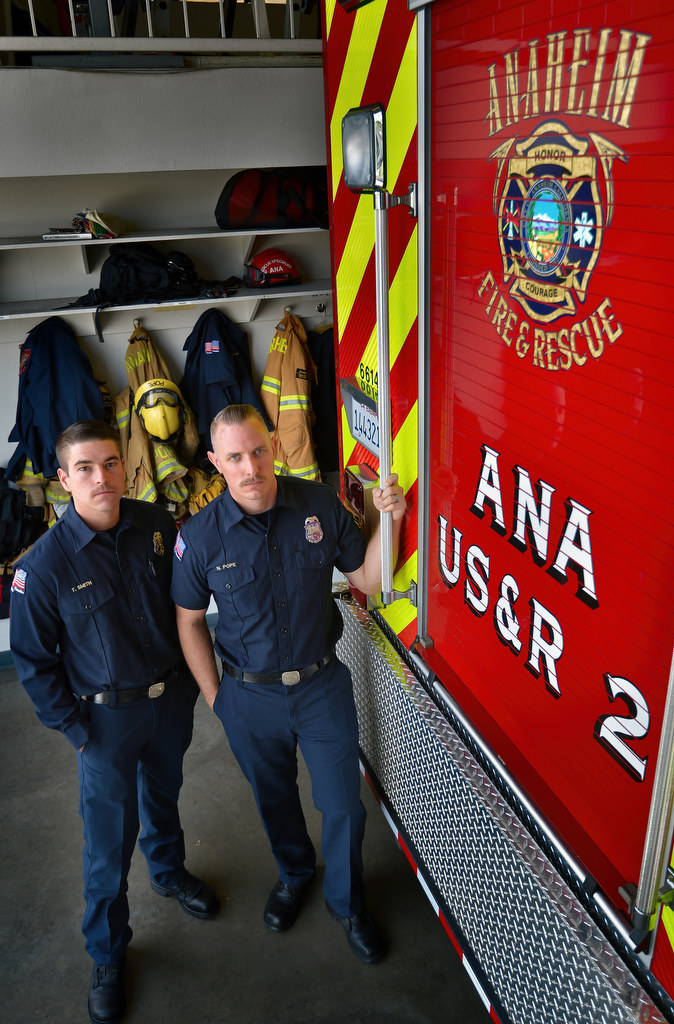Just before 7:30 a.m. during week six of the massive Rough Fire that was raging in the remote and rugged mountains east of Fresno, a thick, burning tree limb came barreling down a steep, charred hillside.
A crew of hotshots — the billy goats of wildland firefighting, renowned for their endurance and climbing skills — was working near a bulldozer line below.
The limb crashed into one of the hotshots, pinning him face down in the spongy earth.
The sizzling limb — diameter 3 feet — began burning through his jacket, which is thinner and lighter than a traditional turnout.
His shirt was next.

Rescue crews load the victim of a burning tree accident during the Rough Fire as Anaheim Fire & Rescue Firefighter Paramedic Taylor Smith looks on. Photo courtesy of Taylor Smith
Stunned members of the crew tried to move the limb off his back, but it was too heavy.
With time of the essence and the fallen firefighter screaming in agony, the hotshots called for emergency help and began using chainsaws to cut the limb into smaller pieces to free the firefighter and begin treating his burn, which seared him from the top of his back to his buttocks.
For two recent additions to Anaheim Fire & Rescue’s Urban Search and Rescue unit — both only a month into their new assignment, and only two days into their 14-day deployment to the lightning-sparked blaze — that call would turn out to be, quite literally, baptism by fire.
And the deployment that morning of Taylor Smith, 24, and Nicholas Pope, 30, firefighter paramedics assigned to Anaheim’s Station 2, also is believed to be the first in the state involving the use of a technique in development for three years whose acronym matches that of a famous rock band.
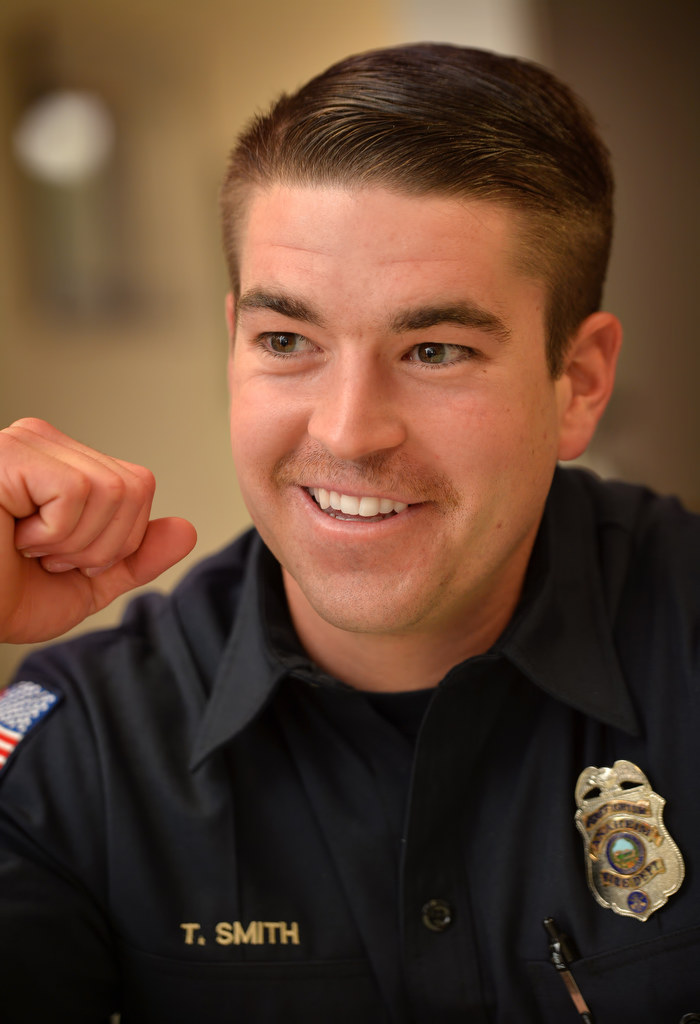
Anaheim Fire & Rescue Firefighter Paramedic Taylor Smith called the REM extraction the most physically challenging thing he has ever done. Photo by Steven Georges/Behind the Badge OC
***
REM stands for Rapid Extraction Module, or Rapid Evacuation Module.
Developed beginning in 2012 after lessons learned from fires in the Klamath and Rouge River-Siskiyou National Forests, REMs are designed to speed up the rescue process when a firefighter becomes incapacitated during a wildfire.
REMs are pre-staged rescue teams of at least two specialists in search and rescue who use rope systems to pull injured or ill firefighters to areas where they can get medical help.
Not meant to replace ground or air transport, REMs are used when heavy smoke, topography or other conditions prevent aircraft from being used for rescues.
For decades, fire service agencies have used Rapid Intervention Crews (RIC) on structure fires — teams of specialists who spring into action when a firefighter goes down.
REMs essentially do the same thing, but in the wild.

Nicholas Pope, like Taylor Smith, are recent additions to Anaheim Fire & Rescue’s Urban Search and Rescue team.
Photo by Steven Georges/Behind the Badge OC
***
Smith and Pope reported to the Rough Fire on Sept. 5 to relieve two colleagues from Station 2, Capt. Eric Ham and Firefighter Engineer Nate Petralia.
Ham and Petralia had put in a 14-day stretch as REMs. They had spent a lot of time training and explaining to firefighters from numerous other fire service agencies what REM was as the Rough Fire roared through the Sierra National Forest, Sequoia National Forest and Sequoia and Kings Canyon National Park.
Smith and Pope were one of three REM teams working the Rough Fire, and the only REM team from Orange County — along with two other firefighters with the Orange City Fire Department.
Miguel Gonzalez, a firefighter from the Orange City Fire Department, extended his two-week assignment to join Smith and Pope in a rented white Chevy Silverado that served as their roaming REM vehicle.
The truck was packed with camping gear and rescue equipment including ropes and carabiners, pulleys, a belay and lowering system, and a Stokes basket, a titanium device used to carry the injured or dead.

Anaheim and Orange firefighters train for a REM during the Rough Fire. Photo courtesy of Taylor Smith
A second Orange City FD firefighter engineer, Bob Lobato, joined an REM team from a Northern California agency.
The morning the emergency call came in, an inversion layer kept smoky air trapped near the ground — obscuring any view from above.
“We didn’t really know what to expect,” Smith said. “All we were told was it was a major medical emergency involving a tree and a firefighter.”
The night before, Smith and Pope had declined an offer to return to base camp, about 45 minutes away, and instead slept on cots near the fire line in the southeast portion of the burn area.
So, when the call came in, they were the REM team closest to the downed firefighter.
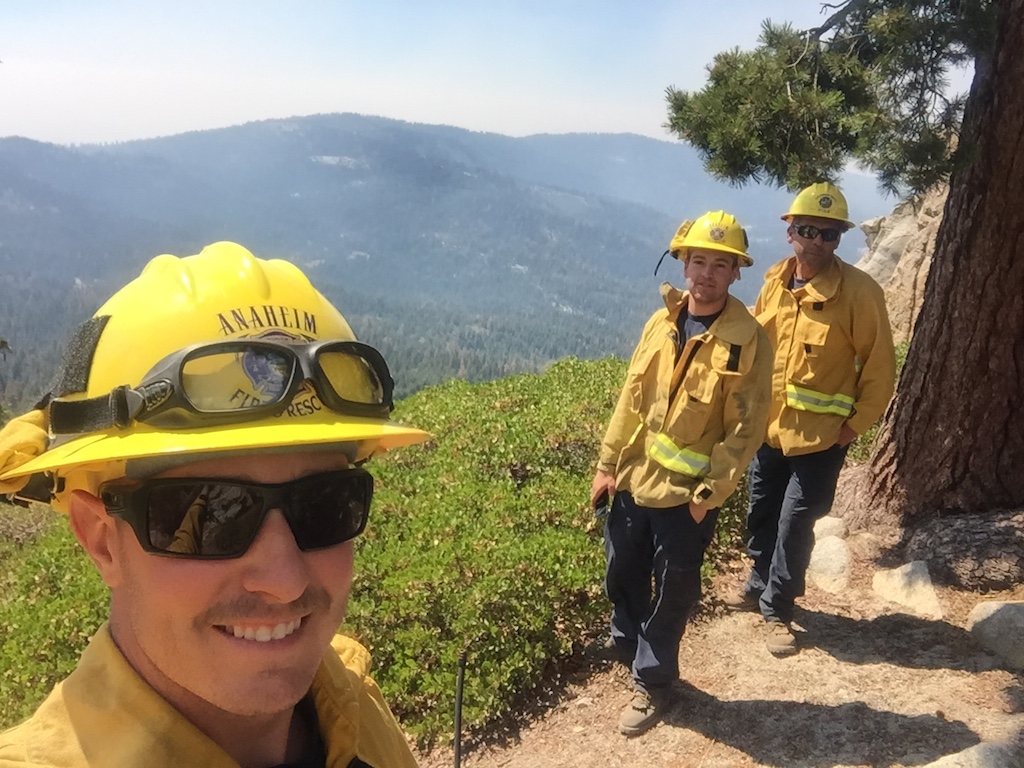
The REM crew (from left) Nicholas Pope, Taylor Smith (both of AF&R) and Bob Lobato, a firefighter with Orange City Fire. Photo courtesy of Taylor Smith
Smith and Pope drove down a paved road for about five minutes, passing areas that looked like moonscapes and others still filled with gorgeous sequoias, and then rumbled down a rugged dirt road for about 30 minutes.
Each carrying about 50 pounds of equipment, Smith and Pope then had to hike about a mile until they reached the downed firefighter.
The injured firefighter was talking but was in severe pain.
The tree was off of him and his wounds had been dressed, but the limb had burned through his clothing.
He had second-degree burns on 24 percent of his body and third-degree burns on 7 percent.
Using trees and large boulders as anchors for ropes, and with the help of several of the downed firefighter’s hotshot comrades, Smith and Pope then dragged the victim up the steep slope they had hiked down — in warm temperatures at an elevation of more than 8,000 feet.

The firefighters get in another training exercise with a Stokes basket during the Rough Fire. Photo courtesy Taylor Smith
The Stokes basket was equipped with a large wheel that made the process easier, but, as Smith said, “It was the most physically demanding thing I’ve ever done.”
The Anaheim Fire & Rescue team then got the badly injured firefighter to an ambulance that then whisked him to an area a mile or two away that had been cleared for a helicopter. The copter then transported him to an area burn center, where he continues to recover.
Smith and Pope figure the REM deployment slashed by a factor of two or three the time it would have taken to extract the firefighter in an impromptu rescue.
As of Wednesday, Sept. 30, the Rough Fire had burned through 151,623 acres and was 85 percent contained; 12 firefighters have been injured fighting the inferno, which has destroyed four structures.
The REM rescue protocol is gaining traction in California — and Taylor and Pope are thrilled that Anaheim Fire & Rescue is among the agencies in the state to employ REM for a real-life rescue.

Another training session involved hoisting a Stokes basket on ropes above a river. Photo courtesy Taylor Smith
“We were grateful to do what we could to help this injured firefighter,” Taylor said.
But the two downplay any heroics and give a lot of credit to Ham and Petralia for laying the groundwork before they arrived at the Rough Fire. And they credit Gonzalez and Lobato from the Orange City Fire Department for doing as much as they did.
Said Pope: “We just happened to be there when the call came in.”
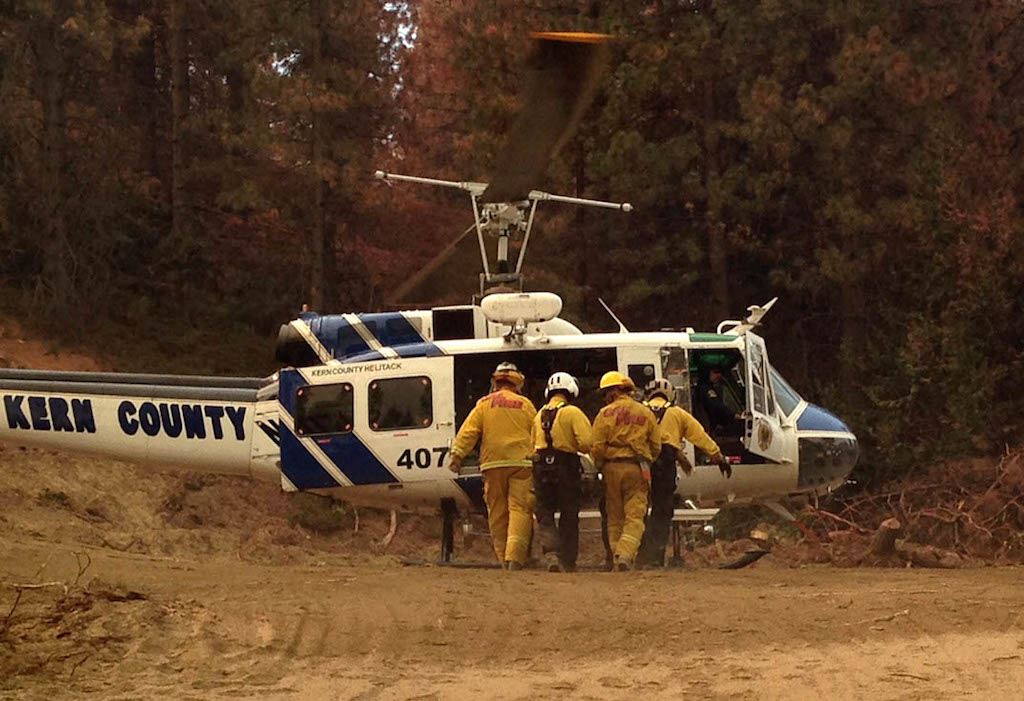
Rescue crews load the victim of the burning tree accident during the Rough Fire onto a helicopter. Photo courtesy of Taylor Smith
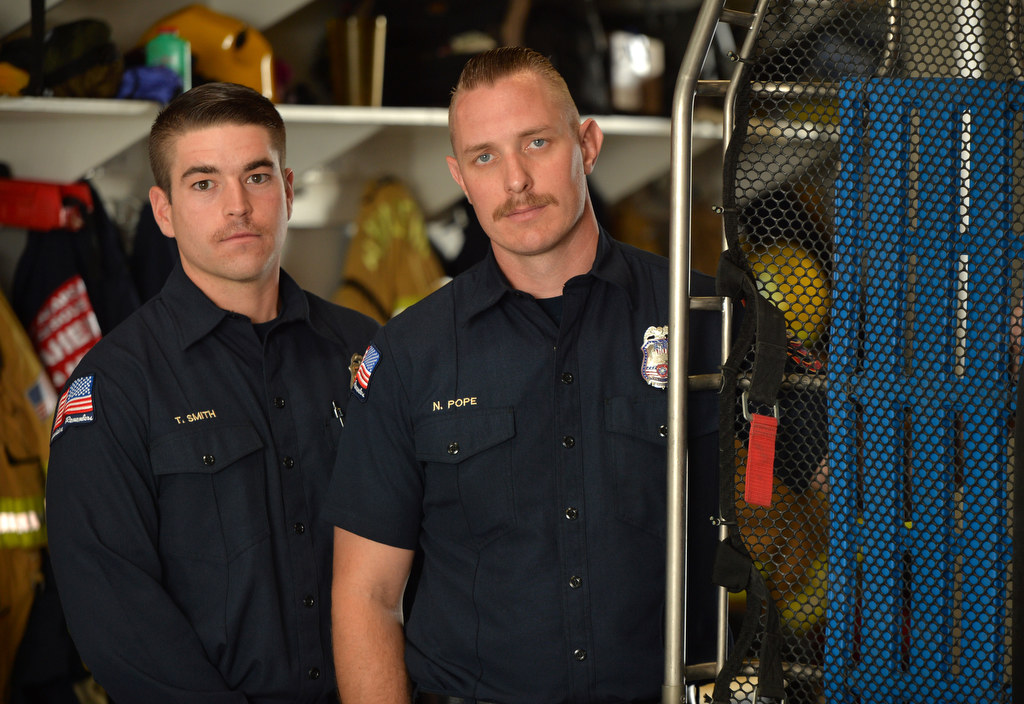
Anaheim Fire & Rescue Firefighter Paramedics Taylor Smith, left, and Nicholas Pope are back at Anaheim Fire Station 2 after spending time at the Rough Fire in the Sierra National Forest where they helped in the rescue of a firefighter who was caught under a burning tree. Photo by Steven Georges/Behind the Badge OC
 Behind the Badge
Behind the Badge
